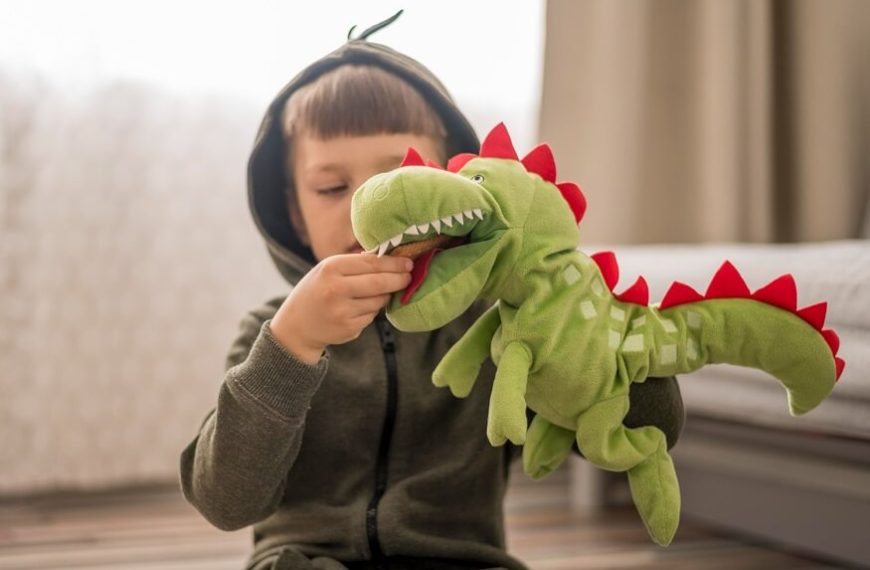Be it girls or boys, dinosaurs are something that fascinates all kids and they will probably be able to rattle off quite a few of their names like Tyrannosaurus Rex and Stegosaurus. There’s a reason why the movie Jurassic Park was such a blockbuster. Children love hearing titbits about dinosaurs and collecting facts about them and it can hold their interest for hours — how T. Rex could consume nearly 50 kgs of meat in a single bite or that Brachiosaurus was as tall as a 4 storeyed building. We have collected a few dinosaur facts for kids which will both thrill and shock them.
The fact is that a lot of what was written and shown in books about dinosaurs is completely different from actual dinosaur discoveries. So here we go with some interesting facts about dinosaurs.
Incredible Dinosaur Facts for Kids
- The word ‘dinosaur’ has its roots in the Greek language and means ‘terrible lizard’, not because they were scary but because of their huge size.
- Palaeontologists have discovered about 700 species of extinct dinosaurs.
- Birds today are a kind of dinosaur because they have a common ancestor with non-avian dinosaurs.
- Fossilised footprints, called trackways, give us interesting evidence about dinosaur locomotion and behaviour.
- For about 150 million years, the dinosaur species survived and dominated on Earth. Some of these dinosaurs were the largest and scariest animals to ever exist in the world. If you are wondering how old are dinosaurs, about 230 million years back, dinosaurs existed from the Triassic period through the Jurassic period till the Cretaceous period which ended around 65 million years ago when they became extinct.
- Why dinosaurs became extinct is rather unclear. Some feel that either the climate became too hot or too cold for them to survive while others believe that an asteroid collided with Earth, killing them.
- The adult Tyrannosaurus Rex were huge, ferocious animals but their baby hatchlings were surprisingly adorable and cute. They were the size of a skinny turkey with an extremely long tail and covered with fuzzy feathers. They would gain almost 5 pounds a day and measured around 40 feet by the time they were 20 years old.
- Argentinosaurus huinculensis was the largest land dinosaur with a length of up to 130 feet.
- The oldest dinosaur is the omnivorous Eoraptor which lived on Earth about 230 million years ago.
- People who study dinosaurs are called palaeontologists.
- The first dinosaur fossils were discovered in the early 1800s. Their remains are preserved in rock and have added to our knowledge of dinosaurs and the way they lived.
- Most scientists believe that birds are the descendants of dinosaurs. Palaeontologists also believe that dinosaurs were of the same family as snakes, lizards and crocodiles.
- The fossils of dinosaur teeth, jaws and dung provide important information about what non-avian dinosaurs ate.
- There are numerous interesting facts about the different types of dinosaurs for kids which they find amazing. Believe it or not, many adult dinosaurs actually had feathers and according to palaeontologists, the Archaeopteryx is one of the earliest birdlike dinosaurs. Yutyrannus huali was the largest known dinosaur with feathers with a length of 30 feet long. Its feathers were probably so that it could stay warm. Other feathered dinosaurs used them to fly.
- Humans and dinosaurs did not coexist. Actually humans did not come on Earth till almost 65 million years after the extinction of dinosaurs.
- All dinosaurs were not carnivores. Some of the biggest dinosaurs, like the Brachiosaurus and Apatosaurus were plant eaters and to protect themselves from carnivorous dinosaurs had spikes or horns as natural weapons.
- Dinosaur fossils have been found on every continent which means they survived in different types of climates and environments from deserts to tropical forests.
- Dinosaurs drank the same water we drink today. Billions of years ago, water came on Earth probably as ice on meteorites that crashed into it. The water cycle ensures that the same water molecules evaporate, condense and precipitate.
- Pterodactyls are not dinosaurs even though they had a lot in common and their existence overlapped.
- Interestingly, some dinosaurs were even smaller than a chicken like the Microraptor. It was a tiny carnivore, small enough to fit in a human palm and weighed all of 2 pounds. It had flight feathers on its legs to move from branch to branch.
- Contrary to what older pictures and movies show us, dinosaurs were actually quite colourful.
- The Sinosauropteryx was a turkey-sized dinosaur that was white and orange with a striped tail. It is also believed that the Caihong juji was rainbow coloured with shiny feathers on its chest and neck.
- Dinosaurs laid eggs and built large nests to protect their young ones.
- Young dinosaurs grew fast and reached their full size in 7 to 8 years.
- Some dinosaurs had a long lifespan and lived almost 100 years.
- Not all dinosaurs existed at the same time, as over 180 million years, new dinosaur species came into being while others went extinct. Palaeontologists have discovered that during the time that the Tyrannosaurus Rex existed, the Stegosaurus and Brontosaurus were already extinct. Some people have the misconception that all dinosaurs lived together at the same time.
- Dinosaurs got sick and there’s evidence that dinosaurs caught respiratory illnesses and developed symptoms like coughs, laboured breathing, fever, nasal discharge, weight loss and colds. As late as 2022, palaeontologists found evidence of a non-avian dinosaur with a respiratory illness based on broccoli-shaped growths in the dinosaur’s fossilised neck bones.
- Dinosaurs loved to snuggle and 70 million year old fossilised skeletons show them huddled together either for protection or to stay warm.
- Some dinosaurs moved like human babies and transitioned from walking on all fours to two legs. A 450 gm hatchling called Mussaurus patagonicus probably walked on all fours and after growing and reaching a weight of over a ton, its tail became heavy enough to balance it on two legs.
- We haven’t found all the dinosaurs yet and new species of dinosaurs are found all the time which gives us a better understanding of the species we’ve already found. Palaeontologists are finding a new dinosaur species once a week on average.
We hope this cool information about dinosaurs for kids will keep them enthralled and interested in learning more about this magnificent species. Each day reveals some new information about them which makes them more relatable as they come alive to us.
Visit EuroKids website for more such exciting blogs!














